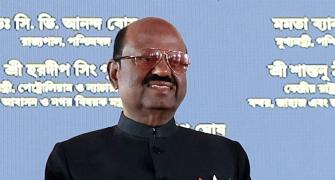The five key components, which are indispensable for any smartphone, cost more than Rs 2,000 even for a budget 3G-enabled 3.5-inch handset, reports Arnab Dutta/Business Standard from New Delhi.

Waiting for a smartphone with standard features, packed with all basic applications (apps) and costs less than Rs 2,000? You may have to wait a bit longer than you probably had expected, because manufacturing standard smartphones priced below Rs 2,000 is not yet feasible in India.
As the Union government is betting big on cashless transactions to put a break on growing black money, it is trying to rope in mobile handset makers to come up with smartphones that cost less than Rs 2,000, thereby enabling more consumers to make online payments.
In a meeting recently held by the NITI Aayog, the think-tank had asked handset manufacturers such as Micromax, Intex, Lava and Karbonn to come up with cheaper phones.
Industry executives, however, say the cost of making a smartphone is still way above the threshold. Most of the key components for producing a smartphone are imported, and thus, bringing the price of a handset below a certain level is not possible.
The prices of smartphones depend on their size and features. On average, the printed circuit board assembly (PCBA), which is the heart of a smart device, accounts for more than 54 per cent of the cost of making a handset.
Other key components like the display panel, rear camera, battery and charger make up more than 28 per cent of a smartphone by value.
Put together, these five key components, which are indispensable for any smartphone, cost more than Rs 2,000 even for a budget 3G-enabled 3.5-inch handset, whose total cost of manufacturing is Rs 2,500.
The operating system (OS) and other patented applications inflate the cost further by at least Rs 500. As the smartphones that the government is willing to promote are expected to have the scanner and security features and software, the cost could be way beyond Rs 3,500.
According to Vikash Aggarwal, chairman and managing director of Indian handset firm M-tech Mobiles, 4G-enabled handsets cost more. “4G LTE smartphones, at sub-Rs 2,000 price, are still at a developmental stage. The industry is also trying to procure 4G-enabled feature phones, which can help in increasing online transactions,” he said.
According to industry experts, digital transactions through smartphones can be made popular at the mass level only when the connectivity of telecom services improves and faster technology-enabled handsets (like 4G LTE) are affordable.
During the past few quarters, the growth of smartphone sales has been muted and sales of feature phones remained high, contrary to expectations of analysts. Higher prices of smartphones (3G and 4G) are a key factor that has kept new consumers away from buying them.
Although the assembly of mobile handsets has gained pace in the country since 2014 as the government started incentivising manufacturers that assemble devices locally, all key components continue to be imported from China, Taiwan and Vietnam and local value-addition in them remains low.
Local value-addition in the PCBA, for example, is at two per cent and for display panels and cameras it's nil. Value-addition for some of the components like the battery (eight per cent), charger (six per cent) and housing (18 per cent) has begun in India. Poor value-addition means greater dependence on imports.
“We don't have much control over the price of components as they are imported. So, our control over cost of a smartphone is also very little at present,” a senior executive of a top handset maker said.
At present, the industry is looking at China to revise the prices of components, which it expects to happen in the coming months.
Fierce competition in the market has put pressure on the profit margins of firms and any further price cut is currently not feasible for them. Companies, at present, are lobbying for more tax sops and benefits from the government.
The goods and services tax (GST), when it comes into effect, will nullify the benefits that they receive because value-addition remains low.
According to Syed Tajuddin, chief executive of Coolpad India, the prices of handsets sold online could go up by eight per cent once the GST comes into effect.
According to senior executives of major smartphone-manufacturing firms, the initiative could be successful under current circumstances, if the government procures in bulk from private players and distributes handsets after subsidising them, like it did in the case of light-emitting diode bulbs.
A similar initiative in tablets, however, failed when it launched the Akash tablet at Rs 4,000, which did not gain much popularity among consumers.
“They should try to promote feature phones which are much cheaper and are capable of making transactions through messaging (SMS),” another industry veteran said.
Photograph: Reuters








